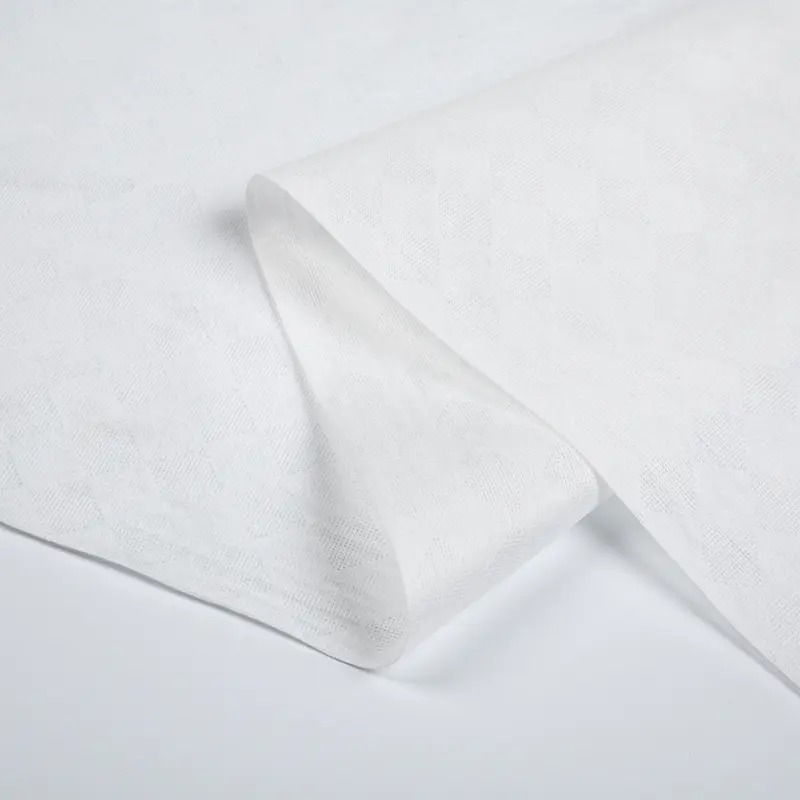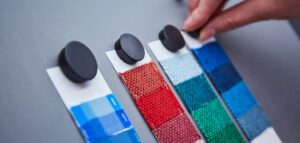Semi-Cross Spunlace Nonwoven – Properties, Manufacturing & Key Advantages
The demand for high-performance, eco-friendly nonwoven fabrics is rapidly increasing across industries such as healthcare, personal care, household cleaning, and industrial applications. Among the most advanced solutions is semi-cross spunlace nonwoven fabric, which combines the softness and absorbency of traditional textiles with the strength and efficiency of engineered materials.
Produced using hydroentanglement technology, semi-cross spunlace nonwoven fabric strikes an optimal balance between softness, durability, and functionality. This makes it a preferred choice for wet wipes, medical dressings, sanitary products, and numerous industrial applications.
This article explores the properties, production principles, and advantages of semi-cross spunlace nonwoven fabric, highlighting why it has become a cornerstone of the modern nonwoven industry.
What is Semi-Cross Spunlace Nonwoven?
Spunlace nonwoven fabric is made using high-pressure water jets that entangle fibers into a strong, uniform web without the need for adhesives or binders. This process ensures that the resulting fabric is safe, breathable, and environmentally friendly.
The term “semi-cross” refers to the orientation of fibers within the web. While parallel-laid webs may have directional weaknesses and fully cross-laid webs may reduce softness, semi-cross orientation offers a balance of strength and flexibility. This configuration ensures even tensile strength in both directions while preserving the fabric’s soft hand-feel.
Key Properties of Semi-Cross Spunlace Nonwoven
Semi-cross spunlace nonwoven fabrics are valued for their multi-functional performance:
Softness and Comfort – Hydroentanglement creates a smooth, textile-like surface suitable for skin contact, making it ideal for wipes, diapers, and medical dressings.
High Absorbency – The porous structure allows rapid liquid uptake and retention, a critical feature for hygiene and cleaning applications.
Durability – The semi-cross fiber orientation enhances tensile strength and tear resistance, ensuring performance even in wet or demanding conditions.
Low Linting – Fabric integrity reduces fiber shedding, crucial in medical, cosmetic, and industrial cleaning applications.
Breathability – Air-permeable yet protective, the fabric reduces moisture buildup in hygiene and medical uses.
Antibacterial and Hypoallergenic Potential – When blended with natural fibers like bamboo or cotton, the fabric offers added health and hygiene benefits.
Eco-Friendliness – Produced without binders, many semi-cross spunlace fabrics are biodegradable or recyclable.
Advantages Over Conventional Nonwovens
Compared to parallel-laid or cross-laid spunlace fabrics, semi-cross structures offer distinctive advantages:
Balanced Strength – Tensile performance in both machine and cross directions.
Superior Hand-Feel – Maintains softness while resisting deformation.
Versatility – Suitable for disposable and reusable applications across multiple sectors.
Enhanced Safety – Binder-free production ensures fabrics are safer for sensitive uses.
Eco Compatibility – Potential for biodegradable and recyclable product lines.
These qualities have made semi-cross spunlace one of the most versatile nonwoven fabrics available today.
Applications in Key Sectors
Semi-cross spunlace nonwoven fabrics are used in a wide range of industries thanks to their balance of strength, softness, and eco-performance.
1. Medical and Healthcare
Surgical gowns and drapes: Protective yet breathable.
Face masks and respirators: Reliable barrier without compromising comfort.
Wound dressings and bandages: Soft, absorbent, and skin-friendly.
Disposable hospital wipes: Effective cleaning and sanitization.
2. Personal Care and Hygiene
Baby wipes and diapers: Gentle on delicate skin.
Feminine hygiene products: Breathable and absorbent for comfort.
Adult incontinence products: Strong and reliable under stress.
3. Beauty and Cosmetics
Facial sheet masks: High absorbency enhances skincare performance.
Cosmetic pads: Durable and lint-free.
Spa towels and wipes: Luxurious yet disposable for hygiene.
4. Household and Industrial Cleaning
Wet wipes and floor cloths: Absorbent, durable, and lint-free.
Industrial wipes: Effective for absorbing oils, solvents, and chemicals.
Electronics cleaning: Low-lint properties prevent contamination.
5. Packaging and Specialty Applications
Breathable protective packaging: For electronics and consumer goods.
Eco-friendly bags and wraps: Lightweight and recyclable.
Insulation and lining materials: Used in construction and automotive interiors.
Why Semi-Cross Spunlace Nonwoven is Preferred
The success of semi-cross spunlace nonwoven lies in its ability to balance performance, sustainability, and cost efficiency. Industries that rely on hygiene, safety, and durability are increasingly turning to this material as a better alternative to synthetic or chemically bonded nonwovens.
Additionally, the ability to integrate natural fibers (like bamboo, viscose, or cotton) further enhances sustainability while maintaining high-quality performance.
Conclusion
Semi-cross spunlace nonwoven fabric has redefined the nonwoven industry with its unique combination of softness, strength, absorbency, and eco-compatibility. From medical gowns and baby wipes to industrial cleaning cloths and eco-packaging, its versatility makes it a vital material in today’s global textile market.
As industries seek materials that are both high-performance and environmentally responsible, semi-cross spunlace nonwoven is set to play an even greater role in driving innovation and sustainability across healthcare, personal care, household, and industrial sectors.





